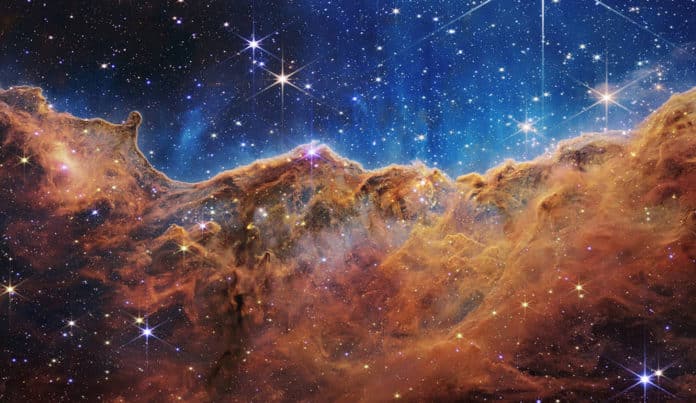NASA’s James Webb Space Telescope’s first full-color images and spectroscopic data were released on July 12, 2022. These images demonstrate Webb at its full power, ready to begin its mission to unfold the infrared universe.
Another image from Webb reveals previously invisible areas of star birth for the first time. The image shows ‘mountains’ and ‘valleys’ speckled with glittering stars. It is the edge of a nearby, young, star-forming region called NGC 3324 in the Carina Nebula. The tallest “peaks” appearing in this image are about 7 light-years high.
The cavernous area has been carved from the nebula by the intense ultraviolet radiation and stellar winds from extremely massive, hot, young stars located in the center of the bubble above the area shown in this image.
NASA stated, “These observations of NGC 3324 will shed light on the star formation process. Star birth propagates over time, triggered by the expansion of the eroding cavity. As the bright, ionized rim moves into the nebula, it slowly pushes into the gas and dust. If the rim encounters unstable material, the increased pressure will trigger the material to collapse and form new stars.”
“Conversely, this type of disturbance may also prevent star formation as the star-making material is eroded away. This is a very delicate balance between sparking star formation and stopping it. Webb will address some of the great, open questions of modern astrophysics: What determines the number of stars that form in a certain region? Why do stars form with a certain mass?”
